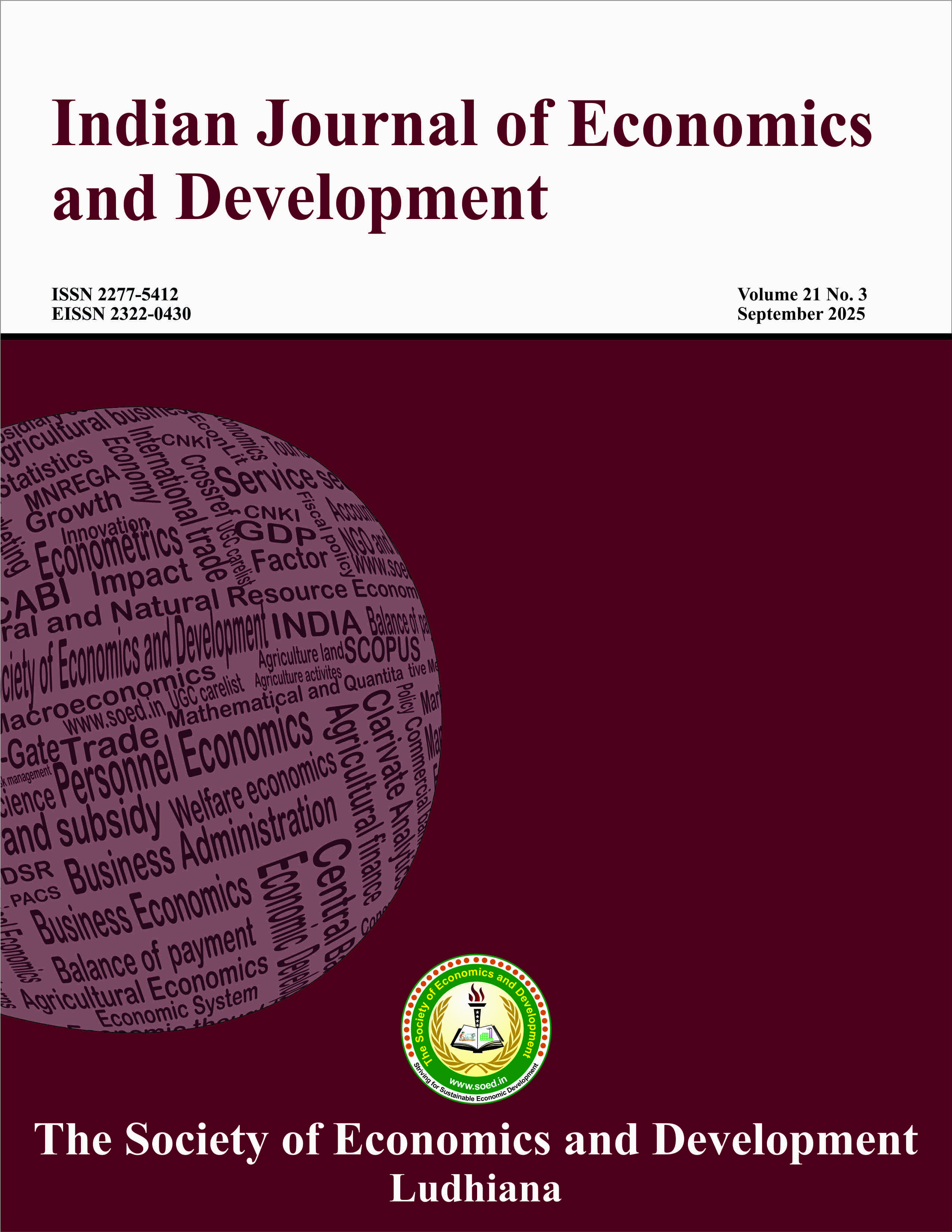Status and Problems of Happy Seeder Technology in South-Western Punjab

Price: ₹ 500
Author: Amanjot Kaur, Prabhjot Kaur and Pankaj Kumar
Author Address: Research Scholar, Professor, and Associate Professor, Department of Extension Education, Punjab Agricultural University, Ludhiana-141 004 (Punjab)
Keywords: Adoption, economics, happy seeder, paddy straw, prospect.
JEL Codes: O30, O39, Q10, Q16.
Abstract
Happy Seeder helps to manage paddy straw in situ rather than burning it in the fields. Additionally, it performs a sowing operation for wheat crops simultaneously. A study examined the status and problems related to Happy Seeder technology. The study was conducted in the Bathinda district, as the highest number of paddy straw burning cases were reported among the south-western districts of Punjab state. The study's results revealed that all respondents were aware of Happy Seeder technology. However; only one-third of respondents adopted it. In 2017, the majority of adopters and areas under Happy Seeder cultivation were observed. Findings revealed that the adoption of technology led to a shift in some agronomic practices, such as reduced weedicide spray requirements, whereas insecticide spray on the crop increased. A sizable proportion (two-thirds) of adopters had prospects to decrease the area under this technology due to various reasons, including the high horsepower required for tractors and poor wheat crop germination. Therefore, it is imperative for the government and research systems to ensure solutions for the problems faced by farmers and to support the adoption of eco-friendly paddy straw management. It is also crucial for the government to form and implement policies that highlight the benefits of Happy Seeder technology.
Description
Indian J Econ Dev, 2025, 21(3), 529-536
https://doi.org/10.35716/IJED-23418



